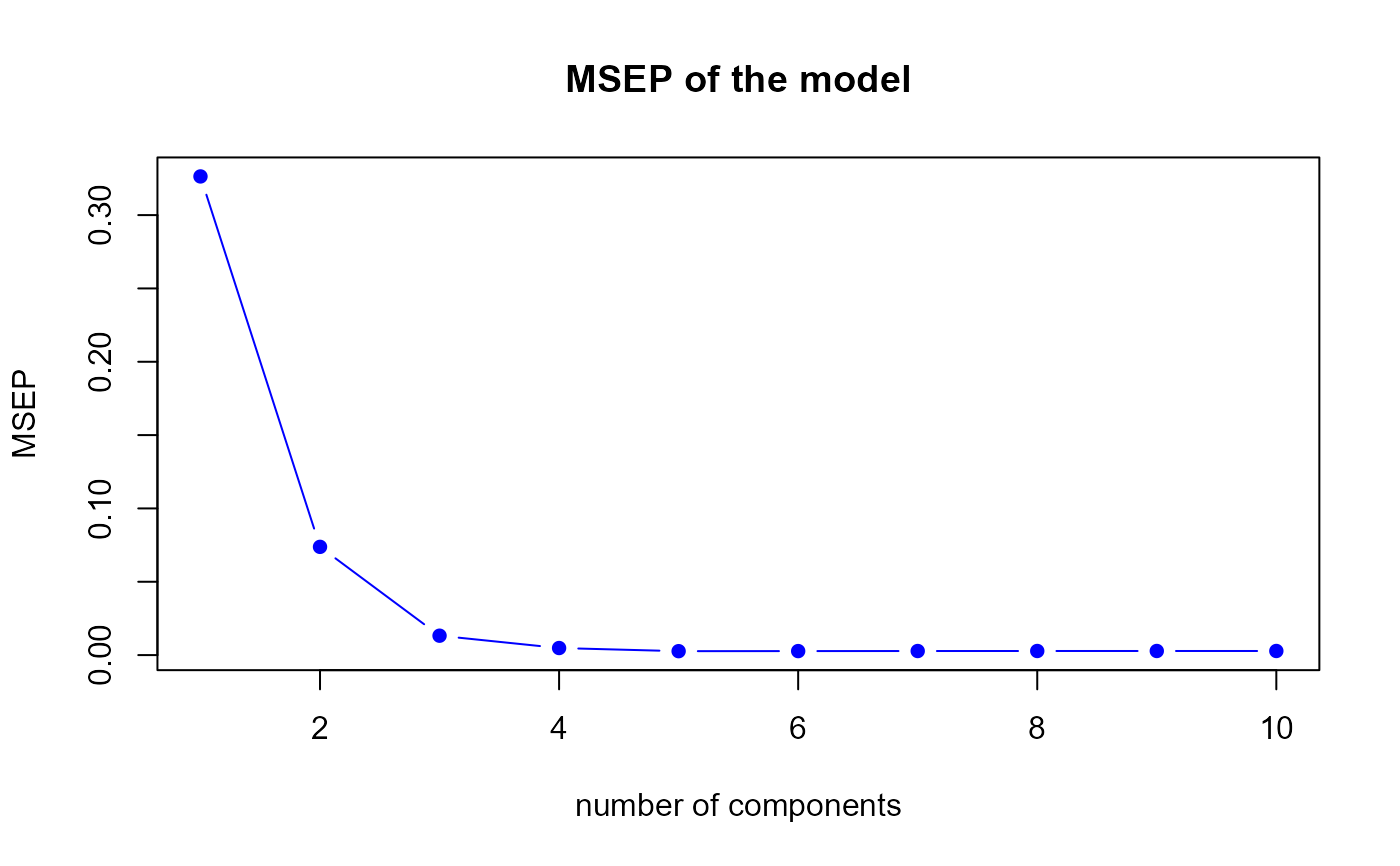PLS function performance assessment using \(MSEP\) indicator
msep.PLS.RdThe msep.PLS function allows to assess PLS models by cross-validation using\(MSEP\) criterion.
This function returns a list including \(MSEP\) values for each number of components.
msep.PLS gives also a suggestion about the number of components selection.
A plot allows to visualize the model performance according to the number of components.
Usage
msep.PLS(object, ncomp = object$ncomp, K=nrow(object$X))Details
A leave-one-out cross-validation is used by default.
\(K\) must be a value between 2 and the the number of rows of the dataset used for training model.
MSEP is defined by mean of squared error between the true \(Y\) values and their associated predictions.
Value
MSEP.train\(MSEP\) of the training set WITHOUT cross-validation
MSEP.cv\(MSEP\) of the training set WITH cross-validation
h.bestIndice of the lowest
MSEP.cv
Examples
library(sgPLSdevelop)
## data and model creation
d <- data.create(p = 10, list = TRUE)
n <- nrow(d$X)
ncomp.max <- 10
X <- d$X
Y <- d$Y
model <- PLS(X,Y,ncomp = ncomp.max, mode = "regression")
## using msep.PLS function
msep.res <- msep.PLS(model, ncomp = ncomp.max, K = n)
 msep.res$MSEP.cv
#> NULL
msep.res$h.best #number of components suggestion
#> [1] 5
msep.res$MSEP.cv
#> NULL
msep.res$h.best #number of components suggestion
#> [1] 5